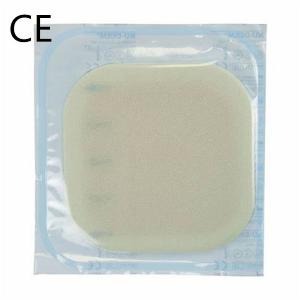
Add to Cart
Water-Proof Disposable Hydrocolloid Wound Dressing For Acne Plaster
Overview:
Medical Hydrocolloid wound dressing is a material containing gel-form agents, such as carboxymethycellulose(CMC and gelatin. It is applied to
wound management, support wound bed a moist environments, accelerate wound healing process. The most common gel in dressings is hydroxymethyl cellulose, which can be firmly adhered to the skin around the wound, and swells up to 12 times after absorbing the exudate.
Specificaiton:
| Product name | Dispoable Hydrocolloid Wound Dressing |
| material | hydrocolloid |
| SIZE | 10*10cm |
| Color | light yellow |
| Use | disposable |
| application | acne |
| Place of origin | Shandong |
| package | carton pacakge |
| MOQ | 10000 |
| Feature: | Sterilized |
| certificates | CE / ISO |
Package:
| Size | Pcs/Box | Boxes/Carton |
| 5*5cm | 20 | 20 |
| 5*5cm | 20 | 20 |
| 10*10cm | 10 | 20 |
| 10*10cm | 10 | 20 |
| 15*15cm | 10 | 20 |
| 15*15cm | 10 | 20 |
| 8*12cm | 10 | 20 |
| 15*18cm | 5 | 16 |
| 5*15cm | 10 | 20 |
| 5*20cm | 10 | 20 |
Product Features:
1.Excellent exudates absorption capability.
2.Keep the wound in a moist enviroment, promote wound healing, effectively release pains and reduce frequency of wound care dressing.
3.Waterproof, breathable, protect the wound from microbial invasion.
4.Excellent elasticith and self-adhesive,comfortable and convenient to use.
5.Change the dressing when it turns white.
Product Advantage:
--The unique thin border design keeps the dressing with good absorbency and enhances the viscosity.
--When hydrocolloid dressing absorbs exudates from wound, a gel on the surface of wound is formed. This makes it easy to peel off the dressing without adherence to wound. Therefore to reduce pain and avoid secondary hurt.
--Keep the wound moist, promote the wound healing, relieve pain and reduce dressing changes.
Application:
Various types of low to moderate exudative wounds, venous lower extremity ulcers, stage I-II bedsores, small-area superficial burns, postoperative wounds, donor site wounds, various superficial traumas and plastic and cosmetic wounds , The granulation and epithelialization phases of chronic wounds.
1.Clean and dry skin before use, ensuring blister area is free of creams and oils.
2.Remove the top paper, then the bottom paper, avoiding touching the adhesive side.
3.Apply plaster firmly over blister, ensuring the edges are well smoothed down.
4.Leave in place until it starts to detach (Note: may stay in place up to several days).
5.To remove plaster: do not pull upwards but slowly stretch along the skin.
Factory pictures: